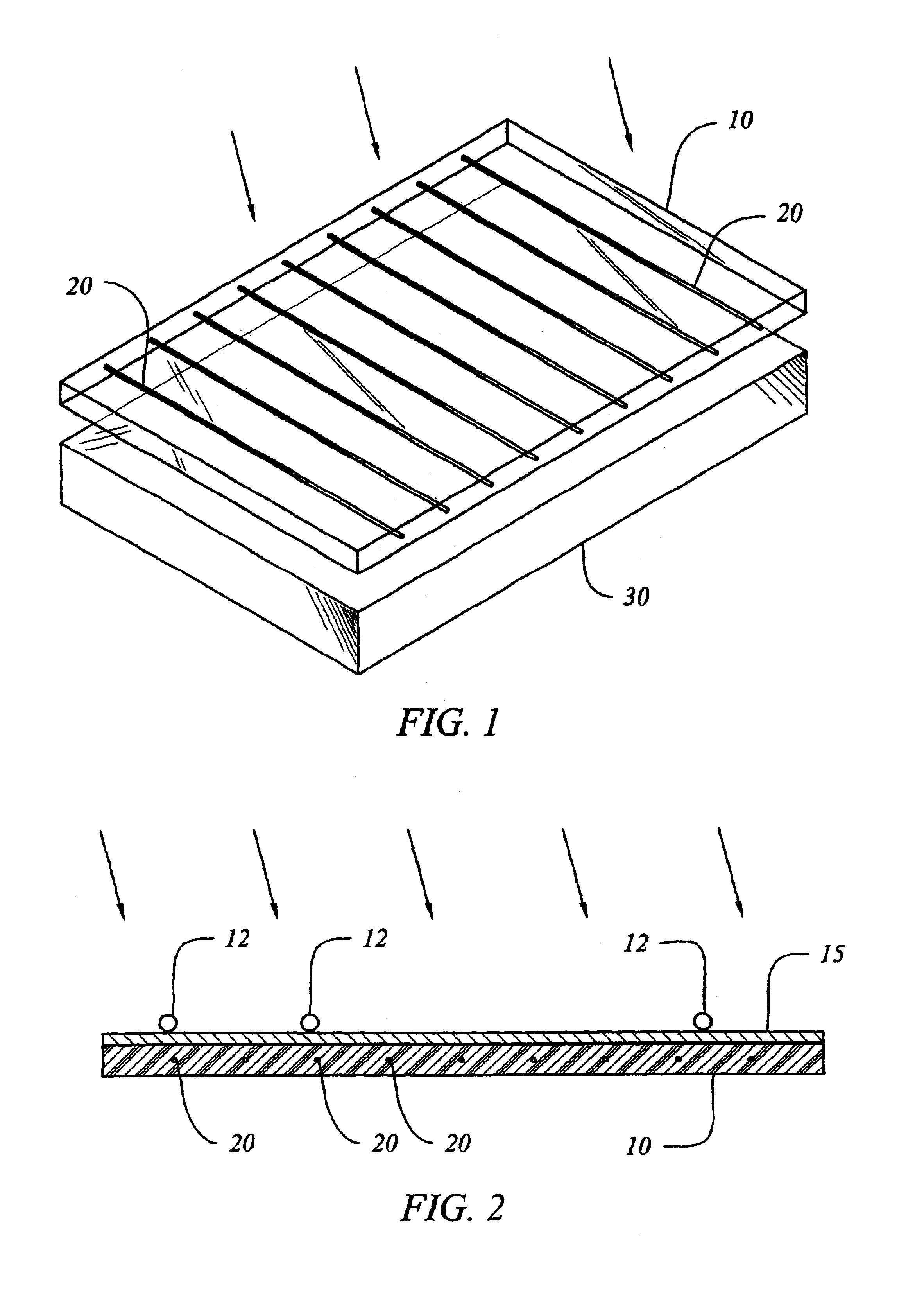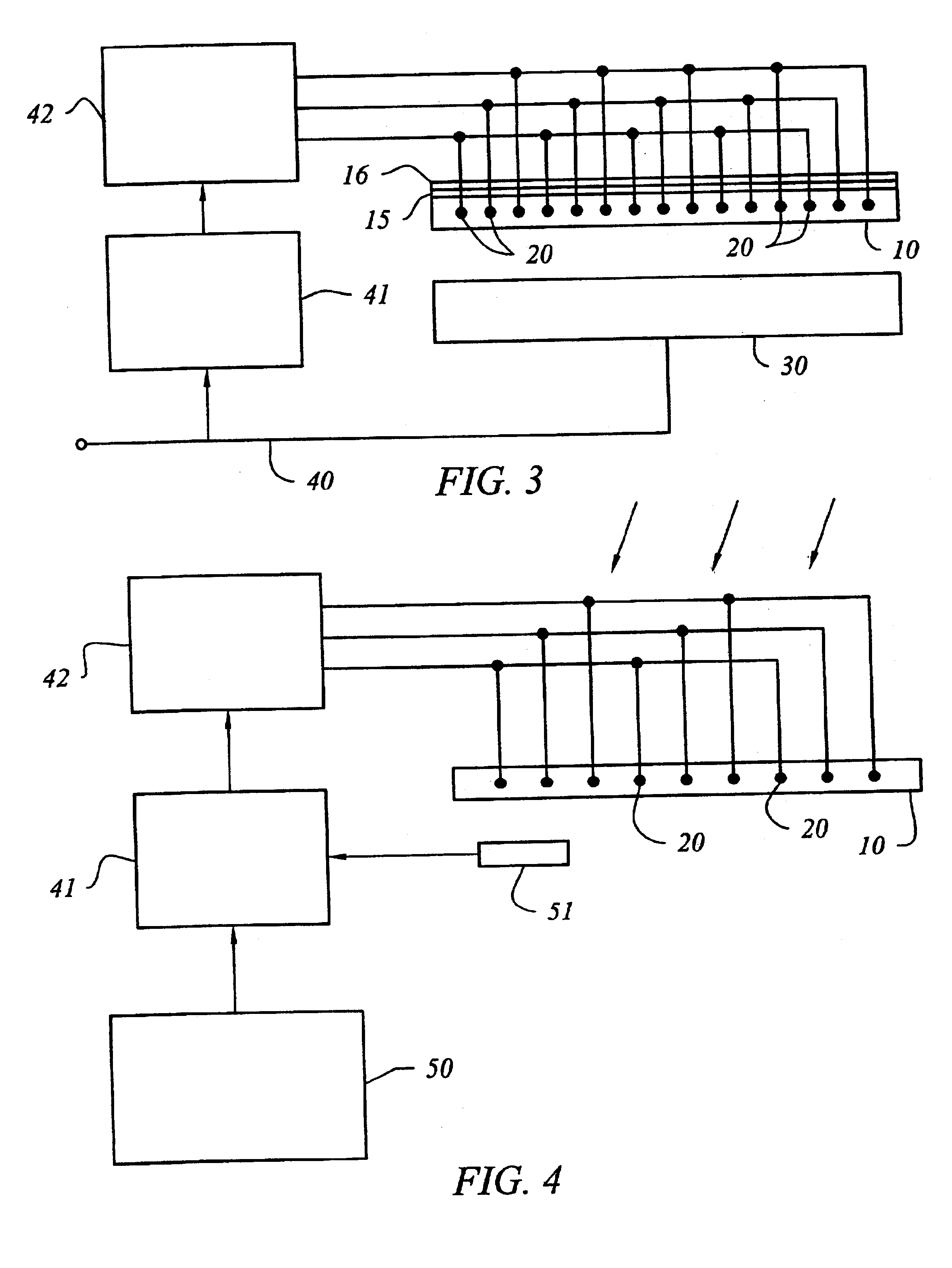Transparent self-cleaning dust shield
a dust shield and transparent technology, applied in vehicle cleaning, cleaning using liquids, batteries, etc., can solve the problems of reducing the amount of light entering the array, affecting the efficiency of solar photovoltaic arrays, and affecting the effect of dust deposition
- Summary
- Abstract
- Description
- Claims
- Application Information
AI Technical Summary
Benefits of technology
Problems solved by technology
Method used
Image
Examples
Embodiment Construction
[0029]With reference to FIGS. 1-3, the preferred embodiment of the present invention may be described as follows.
[0030]The self-cleaning dust shield of the present invention comprises a transparent panel 10 having associated with it an array of electrodes 20. The panel 10 is a non-conducting, i.e., a dielectric, transparent material. The thickness and rigidity of the transparent panel 10 is desirably such that it provides the necessary mechanical support while allowing the electrical field from the electrodes 20 to penetrate sufficiently across the front surface of the panel 10.
[0031]The panel 10 is coated with a semiconducting transparent film 15. The function of the semi-conducting transparent film 15 is to provide tribocharging between the initially uncharged or very lowly charged dust particles 12 that come into contact with the surface. The contact and movement of the particles 12 caused by the electromagnetic field from the electrodes 20 causes tribocharging of the initially u...
PUM
 Login to View More
Login to View More Abstract
Description
Claims
Application Information
 Login to View More
Login to View More - R&D
- Intellectual Property
- Life Sciences
- Materials
- Tech Scout
- Unparalleled Data Quality
- Higher Quality Content
- 60% Fewer Hallucinations
Browse by: Latest US Patents, China's latest patents, Technical Efficacy Thesaurus, Application Domain, Technology Topic, Popular Technical Reports.
© 2025 PatSnap. All rights reserved.Legal|Privacy policy|Modern Slavery Act Transparency Statement|Sitemap|About US| Contact US: help@patsnap.com



